Researchers, students played many roles in physics breakthrough at Large Hadron Collider
The discovery of a new elementary particle – which may well turn out to be the legendary Higgs boson — is both the culmination of years of work by Rice University scientists and the beginning of a new chapter for the university’s Physics and Astronomy Department.
Rice researchers played a major role in the find announced July 4, primarily through their stewardship of elements of one of the two major experiments at the Large Hadron Collider in Switzerland operated by the European Organization for Nuclear Research, CERN.
As such, Rice’s Herman Brown Hall now houses items of historical importance among the racks upon racks of electronics there. Some are doubles of units built at Rice that funnel data from the Compact Muon Solenoid (CMS) and its massive set of particle-sensing gas chambers to its vast array of supercomputing resources. Others are works in progress, being built for the next generation of data-streaming units that will help sort out the wheat from the chaff among the terabits that flow from CMS every second the collider is working.
CMS is one of two primary experiments collecting data at the LHC, where protons traveling at nearly the speed of light smash into each other and shatter into elemental particles that live for only a fraction of a second but contain clues about the universe at its very earliest stages. Results from CMS and the separate-but-equal ATLAS, now analyzed and compared, are the basis for the just-announced analysis, for which credit will go to thousands of scientists worldwide.
Many no doubt work in rooms like the one at Herman Brown. “Consumer stuff’s caught up with us,” said Rice physicist Paul Padley, giving a tour. “We try to ride that technology as best we can, but we have to customize it for our implementation. That’s where we go beyond anything that’s done commercially.”
Go beyond
“Going beyond” is what it’s all about for Padley, a professor of physics and astronomy; his Rice faculty colleagues Jay Roberts, Frank Geurts, Karl Ecklund and Wei Li; and the dozens of other Rice scientists, postdoctoral researchers, graduate students and undergraduates who’ve worked on LHC over the years.
They have been part of a massive effort to investigate fundamental building blocks of the universe, a search that began before Rice’s founding a century ago — and Rice scientists were involved from the beginning. The university’s first physicist, Harold Wilson, came to campus in 1912 after working with famed physicist J.J. Thomson on some of the earliest measurements of the electron — the first subatomic particle discovered.
Padley came along somewhat later with a different collider in mind. “My family moved to Dallas (from Vancouver) in 1993 to work on the Superconducting Supercollider, but when that was canceled by Congress, I was fortunate to land a job at Rice as a postdoc,” he recalled. While working his way up the hierarchy to full professor, Padley also found his way into the CERN project when he ran into a colleague at Fermilab, the LHC’s predecessor as the world’s largest collider.
“He was leading the U.S. contribution to the Endcap Muon (EMU) system and started making suggestions about what I could work on,” Padley said. “And I started talking to people. It’s interesting how these things come together; at some point, I replaced him in his job.”
Padley, who subsequently ran the $40 million EMU program, and Roberts have shepherded progress on CMS for years. Roberts is a co-author of literally dozens of papers tracing the incremental development of the science behind the experiment.
Padley said Rice found a primary role in creating the electronic gateways that pass information from the hundreds of gas-filled Cathode Strip Chambers (CSC) that make up the bulk of EMU, one of several CMS components that detect particles as they fly away from the point where protons collide. “The electronics problem seemed to be a really good fit for Rice,” he said. “We had a lot of electrical engineering students, and then got our hands on Mike Matveev, a Ph.D. engineer who does cutting-edge electronics.”
Electrical connections
Matveev designed, fabricated, tested and commissioned 120 circuit boards that handle accelerator timing and control signals throughout the CSC; these boards then reduce the amount of critical data – to about one-50th of the total – that gets passed along for further analysis.
“Each board passed through two to three iterations, from the first prototypes in 1998 to the final designs in 2004 or 2005, and the production versions were installed in the experimental cavern in 2006 and 2007,” Matveev said.
Because the boards’ programming is based in firmware, debugging so many on the fly is difficult, if not impossible, Matveev said. “It took three years to adjust and refine our algorithms in firmware, and to fix bugs, but from the hardware point of view the final designs turned out to be quite reliable,” he said. “I would say we’ve made two or three minor repairs in recent years. And detector software allows us to monitor the performance of all our boards in real time.”
Monitoring CMS is part of Geurts’ current job. But the Rice assistant professor of physics and astronomy has a long history with CERN and the LHC, where he interned while earning a doctorate in his native Netherlands.
“Paul and Jay have been involved, virtually, from day one, and have an intimate knowledge of the whole process,” Geurts said. “I joined while I was working for Fermilab in 2004, when CMS was under construction, for commissioning of the endcap.”
Testing, testing
That involved extensive and increasingly complicated tests of the gas chambers and associated electronics that make up the outer layers of CMS. “The idea of having a charged particle go through a gas volume, ionizing the gas, is not in itself complicated,” Geurts said. “What is complicated is the scale of the detector. It’s massive.”
Muon chambers, he said, “have a reputation” for being difficult. “When I got to CERN, the chambers had been shipped in from all over the world – from Russia, China and three locations in the U.S. The first round of tests was almost completed.”
With Roberts, Geurts took part in and eventually took charge of tests to make sure the chambers worked. “When I arrived, I couldn’t believe my eyes,” he said. “There were, at that point, 468 chambers. Seeing them all lined up in their boxes in the old accelerator complex – almost infinitely spanning a hallway – was quite impressive.”
Geurts and his team started their years-long regimen by pushing particle beams through selected chambers. “We saw eight events (when a particle’s passage was captured by the chamber),” he said. “I don’t know how many billions of events they see at the LHC now – but those eight events were fantastic!”
Later they began to confirm the performance of the thousands of electronic components feeding data from the chambers. Ultimately, the team combined its mini-EMU setup with other components of the CMS to make sure everything played well together.
“It was the first time we had data going all the proper ways we thought CMS would operate, combining all that information in a manner that synchronized every piece,” he said. “It was really cool.”
Closer to the center
Ecklund’s work took place closer to the source, as head of data-acquisition software team for the pixel detector that sits at the center of the CMS. “It’s like a 66-megapixel camera that snaps a photo 40 million times each second,” he said. The pixel detector records the passage of subatomic particles deep inside the collider. Ecklund led the team that developed the software to control the pixel detector and transfer data by optical fibers to racks of computers that decide which events to keep for analysis. Along with students and postdoctoral researchers from Rice, he has remained involved in pixel detector operations to keep it working up to specification as the LHC performance improves and the flood of data comes faster and faster.
Ecklund, whose research focuses on the production of events with top quarks, joined Rice in 2008 but began working on CMS in 2005 while at Cornell University. “Before that, I was working on the CLEO experiment at Cornell,” he said. “It’s a much-lower-energy (10 billion electron volts; the LHC measures in the trillions) electron-positron collider, doing work on bottom and charm quark decays.
“Part of what I do on CMS is study top quark decays, so there’s some synergy there. I got involved in the pixel detector work in 2005 because I had been working on tracking detectors and electronics at Cornell, and before as a grad student.”
All involved were anxious to move forward when the LHC hit its first serious speed bump.
Geurts was in the CMS control room in September, 2008, the day the first particle beam was set to pass through the collider. Then a faulty soldering joint failed along the nearly 17-mile ring. “It became hot, which started to warm up the helium, which started to expand rapidly,” he said. “Then we got a chain reaction where things went really wrong.”
Nearly six tons of helium were lost in the accident, which damaged the collider and delayed operations for more than a year.
“It was quite shocking,” Geurts said of the incident, which came at the end of his tenure in Switzerland. “It made you realize that even though you’re looking at very faint signals, the whole system surrounding it is state-of-the-art tech involving a lot of energy.”
Upgrades to come
In late 2012, with several years of successful collisions complete, the LHC will shut down for upgrades expected to nearly double its energy in 2014. The improved collider will also feature the new electronics being developed for CMS at Rice, which CERN scientists say should lead to new and perhaps unexpected discoveries. Rice is also playing a role in development of a new, improved pixel detector, which will be ready a few years later.
 Li, who officially joined the Rice faculty this week, hopes to lead that charge. “I have to say that my research interest is not directly related to the Higgs particle,” said Li, who began his work on CMS in 2009 as a postdoctoral researcher at MIT. “I study heavy nucleus-nucleus – like lead nuclei – instead of proton-proton collisions at very high energy at the LHC, using the CMS detector.
Li, who officially joined the Rice faculty this week, hopes to lead that charge. “I have to say that my research interest is not directly related to the Higgs particle,” said Li, who began his work on CMS in 2009 as a postdoctoral researcher at MIT. “I study heavy nucleus-nucleus – like lead nuclei – instead of proton-proton collisions at very high energy at the LHC, using the CMS detector.
“The goal is to study the novel properties of the matter at extremely high temperature, about 1012 Kelvins,” he said. “Our findings show hot matter at that temperature behaves like a liquid that flows better than any known fluid in the universe. It has important implications to our understanding of the strong force between quarks and gluons.
“Although the physics goal is different, we all rely on the success of the LHC program and CMS experiment,” Li said. “Discovery of the Higgs will ensure strong support of the program in the future, including a crucial upgrade of the detector to enhance its physics capability.”
Padley, who has stepped back from his primary role in the endcap’s creation, now has more time to absorb the physics learned at CERN. He’s also cognizant of what the find means to his students past, present and future.
“Even before we have made any scientific discoveries, we have advanced the technology and introduced a whole generation of Rice students to that technology,” he said. “In the end, large-scale scientific endeavors engage students around the world in the creation of technology and a new understanding of nature.”
They also serve
A number of Rice people are at CERN this week witnessing history. They include Ecklund and Roberts; Chaouki Boulahouahce and Laria Redjimi, both Rice postdoctoral researchers; senior physics major Gye Won “Diane” Choi; recent electrical engineering graduate Robert Brockman, who will be a Rice graduate student in the fall; and graduate student James Zabel. Graduate students Antony Adair, who will travel to CERN this month, and Benjamin Michlin have also worked on the project.
Other contributors include research scientists Jinghua Liu and Ted Nussbaum; Pablo Yepes, a senior faculty fellow in the Department of Physics and Astronomy, and former postdoctoral researcher Alex Tumanov.
Former students, graduate students and postdoctoral researchers who worked on the LHC during their time at Rice include Andrew Altheimer, Elie Bengio, Seth Brown, Diego Caballero Orduna, Micaela Casas, Vesna Cuplov, Zigfried Hampel-Arias, Wooyoung Hong, Shaiyan Keshvari, Sang-Joon Lee, Daniel Maronde, Jafet Morales, Kyung Oh, Gregory Pawloski, Hiren Patel, Luca Sabbatini, Joey Suttle, Andrea Trevino and Tonia Venters.
Links:
Read about the discovery at https://news2.rice.edu/2012/07/04/rice-physicists-help-discover-new-particle-that-may-be-higgs-2/
Read profiles of Rice participants at the US/LHC site: http://www.uslhc.us/The_US_and_the_LHC/Collaborating_Institutions/Rice_University
Read a 2010 look at the Large Hadron Collider by Karl Ecklund: https://news2.rice.edu/2010/04/02/the-way-i-see-it-particle-physics-enters-new-territory/
A 2010 feature story about Rice’s participation in the LHC, “Collision Point,” appears in Rice Magazine. The author, Don Lincoln, is a Rice alum and a CMS collaborator: http://issuu.com/riceuniversity/docs/rice_magazine_issue_6/1
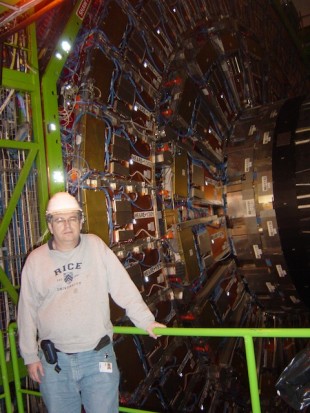
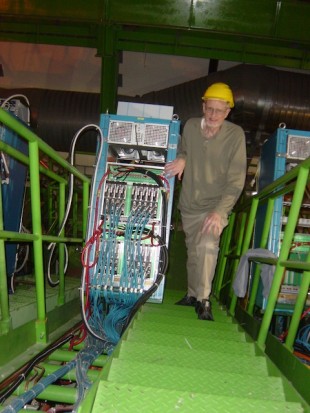
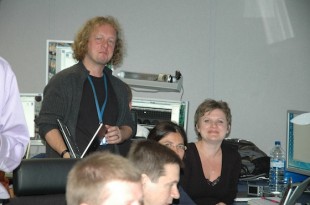
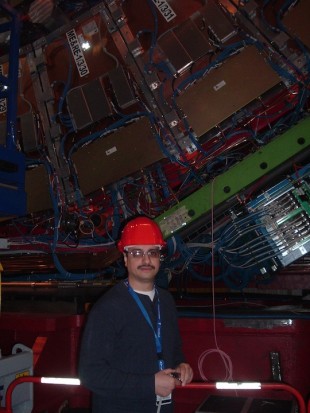

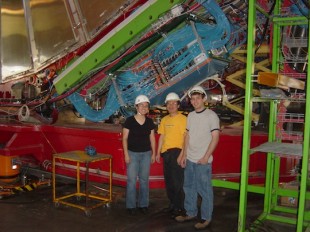


Leave a Reply